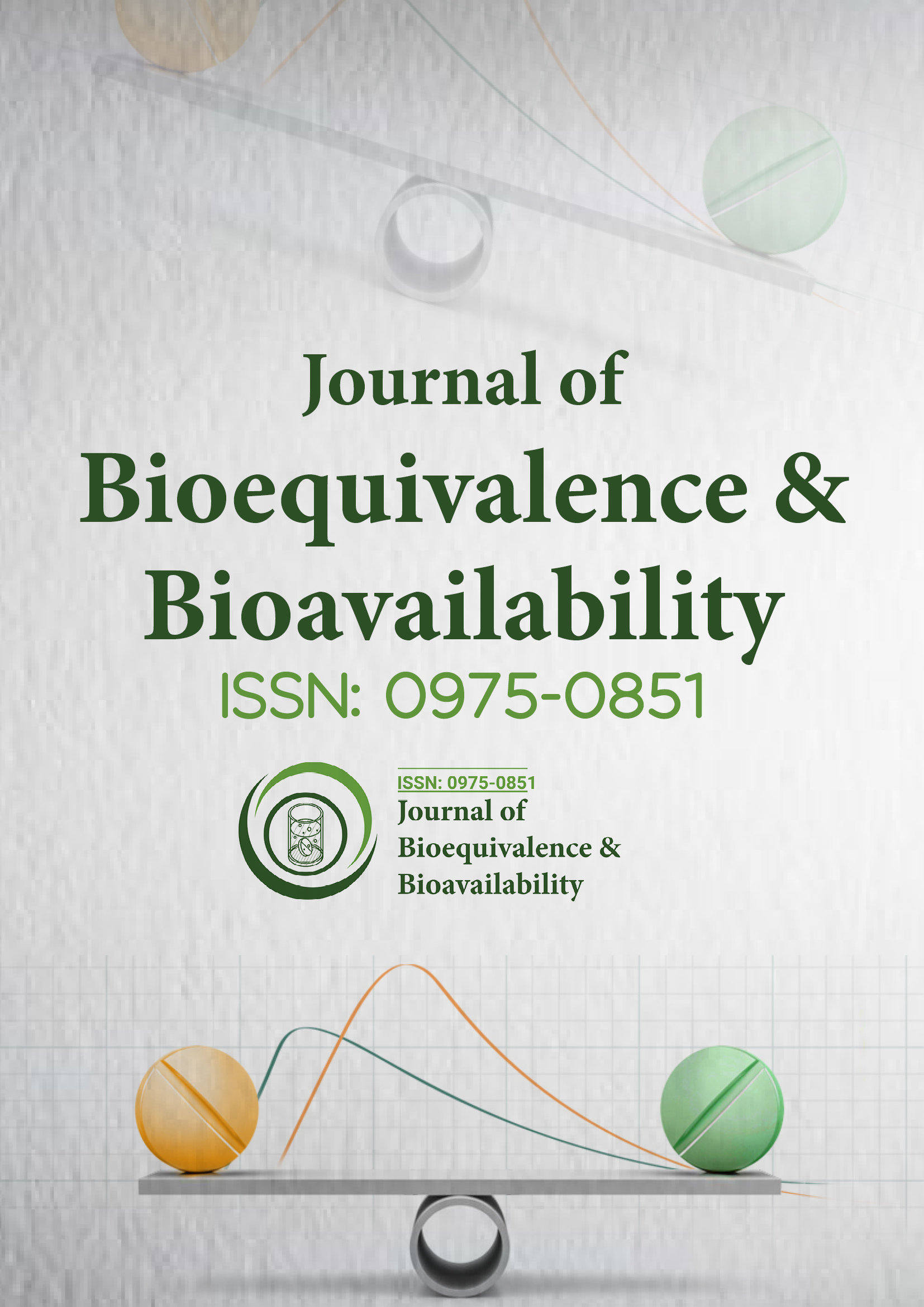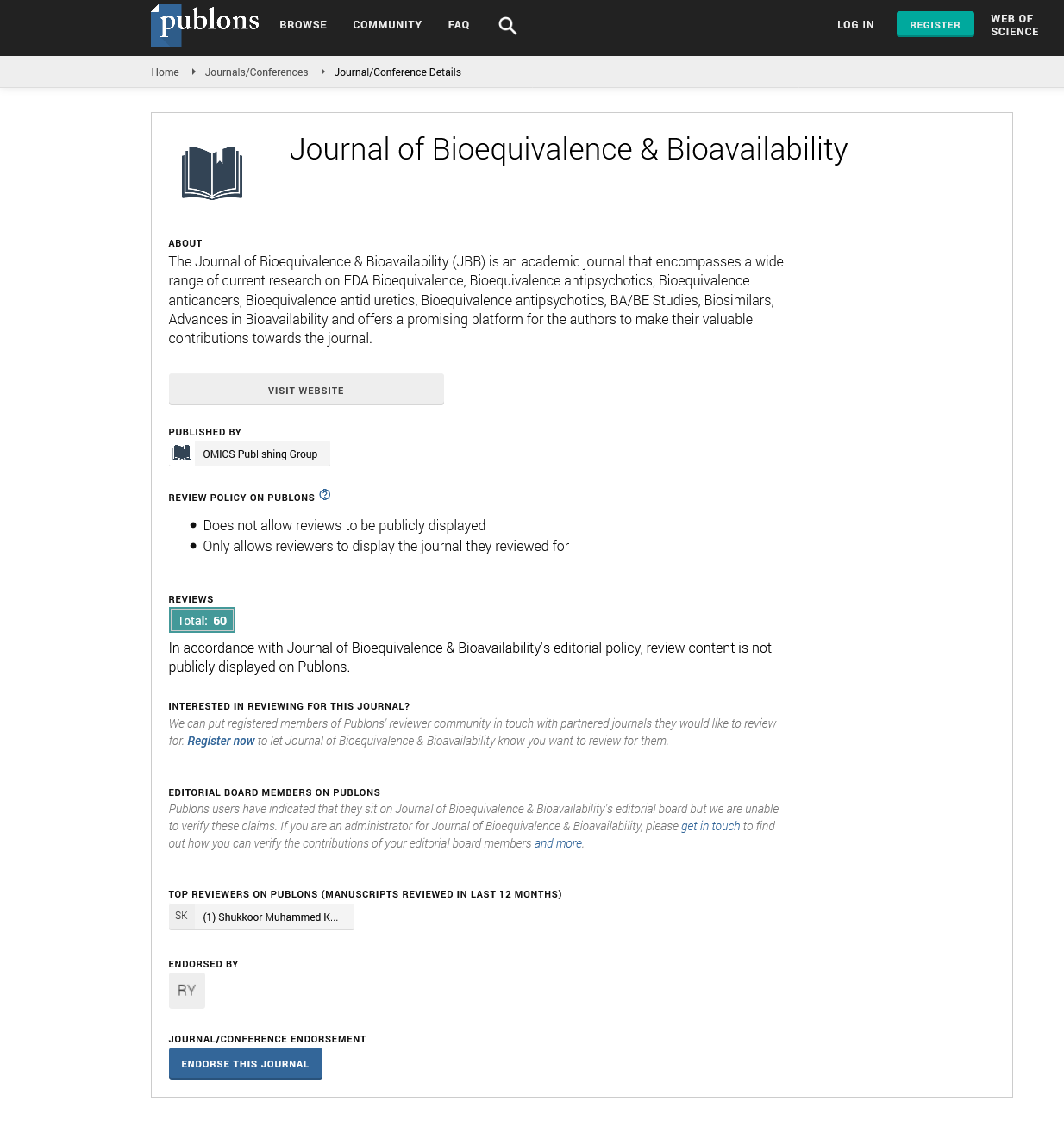Indexed In
- Academic Journals Database
- Open J Gate
- Genamics JournalSeek
- Academic Keys
- JournalTOCs
- China National Knowledge Infrastructure (CNKI)
- CiteFactor
- Scimago
- Ulrich's Periodicals Directory
- Electronic Journals Library
- RefSeek
- Hamdard University
- EBSCO A-Z
- OCLC- WorldCat
- SWB online catalog
- Virtual Library of Biology (vifabio)
- Publons
- MIAR
- University Grants Commission
- Geneva Foundation for Medical Education and Research
- Euro Pub
- Google Scholar
Useful Links
Share This Page
Journal Flyer

Open Access Journals
- Agri and Aquaculture
- Biochemistry
- Bioinformatics & Systems Biology
- Business & Management
- Chemistry
- Clinical Sciences
- Engineering
- Food & Nutrition
- General Science
- Genetics & Molecular Biology
- Immunology & Microbiology
- Medical Sciences
- Neuroscience & Psychology
- Nursing & Health Care
- Pharmaceutical Sciences
Opinion - (2025) Volume 17, Issue 1
Biological Variability and Its Implications for Bioequivalence Studies
Fang Ya*Received: 03-Feb-2025, Manuscript No. JBB-24- 28946; Editor assigned: 05-Feb-2025, Pre QC No. JBB-24- 28946 (PQ); Reviewed: 18-Feb-2025, QC No. JBB-24- 28946; Revised: 25-Feb-2025, Manuscript No. JBB-24- 28946 (R); Published: 04-Mar-2025, DOI: 10.35248/0975-0851.25.17.623
Description
Biological variability plays a central yet often understated role in the assessment of bioequivalence, shaping the interpretation, design, and outcome of pharmacokinetic studies. Bioequivalence aims to establish that two pharmaceutical products—typically a generic and its branded counterpart—are comparable in terms of their bioavailability, meaning the rate and extent to which the active drug ingredient becomes available at the site of action. While the foundational principles of bioequivalence testing rest on pharmacokinetic metrics such as Cmax (Maximum Plasma Concentration) and AUC (Area Under the plasma concentration-time Curve), these measurements are inextricably linked to the biological systems in which they are generated. The intrinsic variability among human subjects introduces a significant layer of complexity into the process, calling into question the assumption that pharmacokinetic similarity equates to therapeutic equivalence in a broader patient population.
Intra-individual variability, on the other hand, refers to fluctuations in pharmacokinetic parameters within the same person under different conditions or at different times. This can be influenced by factors such as circadian rhythms, diet, hydration levels, hormonal fluctuations, or concurrent illnesses. For example, the same individual might exhibit different drug absorption profiles depending on whether the medication was taken in a fed or fasted state, or during periods of stress or altered sleep patterns. This form of variability poses a particular challenge in crossover bioequivalence studies, where each participant receives both the test and reference product in different periods. While the design inherently controls for inter-individual variability by using each subject as their own control, it cannot entirely eliminate intra-individual fluctuations that may obscure or exaggerate differences between formulations.
One approach that has emerged to address this issue is the use of Scaled Average Bioequivalence (SABE) for highly variable drugs. This method adjusts the bioequivalence limits based on the observed within-subject variability of the reference product, thereby allowing for wider confidence intervals when variability is high, while still maintaining a rigorous assessment framework. While SABE offers a more realistic and scientifically justified method for evaluating bioequivalence in the presence of biological variability, it has not been universally adopted and remains a subject of ongoing debate. Critics argue that scaling could inadvertently allow inferior products to gain approval, while proponents view it as a necessary evolution in bioequivalence methodology that acknowledges the biological complexity inherent in drug response.
Moreover, biological variability has implications for the selection of bioequivalence endpoints themselves. The traditional reliance on Cmax and AUC as surrogates for therapeutic effect assumes a linear and predictable relationship between drug concentration and clinical response. However, many drugs exhibit non-linear pharmacokinetics, time-dependent effects, or require accumulation to reach steady-state levels, complicating the interpretation of single-dose studies. Furthermore, the clinical relevance of these parameters may vary depending on the drug’s mechanism of action. For example, Cmax might be less important for a drug intended to maintain a steady plasma concentration over time, while AUC might be insufficient to capture therapeutic equivalence in drugs with complex dose-response relationships or site-specific actions.
Despite these innovations, the fundamental challenge posed by biological variability remains: how to reconcile the controlled, reductionist environment of bioequivalence trials with the unpredictable, multifactorial nature of drug use in real life. There is no perfect solution, but a more transparent acknowledgment of this variability, coupled with efforts to refine methodologies and expand the evidentiary base, is essential. Policymakers, industry stakeholders, and clinicians must collaborate to ensure that bioequivalence assessments continue to evolve in a way that prioritizes patient safety without stifling access to affordable generics.
In conclusion, biological variability is not merely a statistical inconvenience but a core scientific and clinical reality that must be addressed in the evaluation of bioequivalence. It challenges the assumption that pharmacokinetic similarity guarantees therapeutic equivalence and highlights the need for more flexible, adaptive, and context-sensitive approaches to generic drug assessment. While regulatory frameworks have made considerable progress in accounting for variability through advanced statistical models and methodological refinements, much work remains to be done. As the pharmaceutical landscape grows more complex, embracing the biological nuances of drug response will be critical in ensuring that bioequivalence testing remains both scientifically valid and clinically meaningful.
Citation: Ya F (2025). Biological Variability and Its Implications for Bioequivalence Studies. J Bioequiv Availab. 17:623.
Copyright: © 2025 Ya F. This is an open-access article distributed under the terms of the Creative Commons Attribution License, which permits unrestricted use, distribution, and reproduction in any medium, provided the original author and source are credited.

